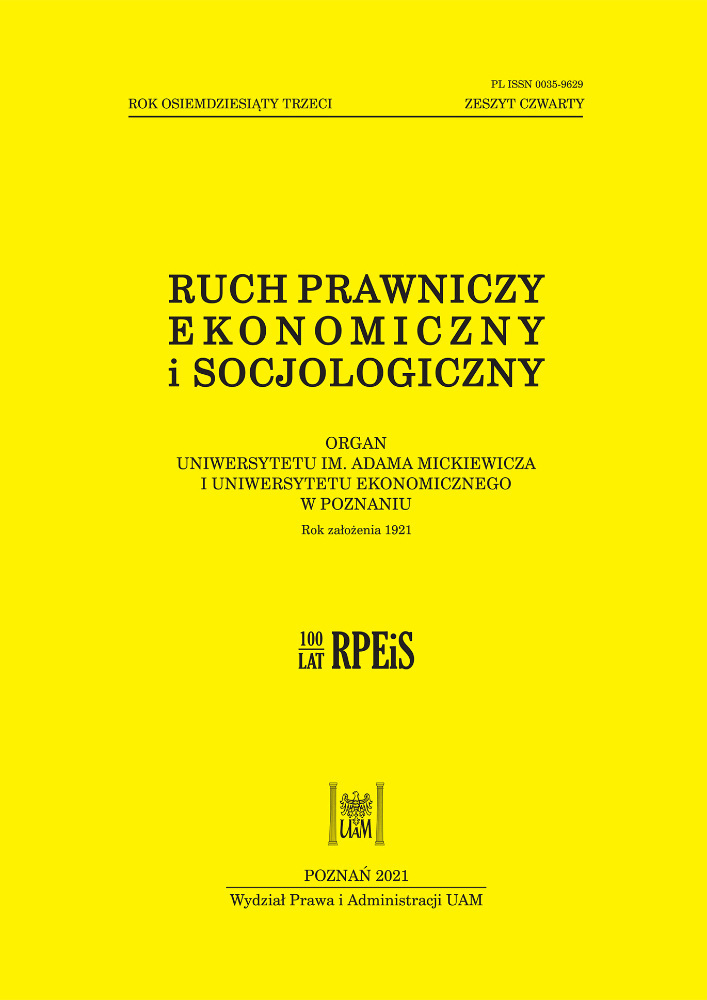Abstract
The main goal of the article is to compare the sickness-related absence among workers from different age groups. An additional goal is to verify whether there is the same pattern of sickness absenteeism in Poland as observed in several other countries, namely that younger and older workers tend to exhibit different patterns of absenteeism, in terms of frequency and duration. In order to measure absence due to sickness, three sorts of indicators were used: (i) the average frequency of absence in a year, (ii) the average duration of absence in a year, and (iii) the average duration of a single period of sick leave. These indicators were calculated for five-year age groups, with an additional division by gender. The calculations were based on data from the Social Insurance Institution (ZUS) for the period 2012–2019. On the basis of the obtained results, it can be concluded that workers are characterized by different absenteeism behaviour. The key is not, however, the general (average) level of absence, but the detailed configuration of this absence in terms of particular parameters. The most important finding is that the pattern of absence due to sickness was confirmed with regard to the youngest and oldest workers: the frequency of absence is the highest among the youngest workers and the lowest among the oldest, while the duration of absence is the longest among oldest workers and the shortest among the youngest.
References
Edwards, P., Kay, G. (2010). Absence from work. Dublin: Eurofund. .
Henderson, M., Hotopf, M., Leon, D.A. (2009). Childhood temperament and long-term sickness absence in adult life. British Journal of Psychiatry 194(3). doi: 10.1192/bjp.bp.107.044271
Hill, J.M.M., Trist, E.L. (1955). Changes in accidents and other absences with length of service. Human Relations 8(2). doi:10.1177/001872675500800202
Jurek, Ł. (2021). Proces starzenia się zasobu siły roboczej: studium demograficzno-ekonomiczne’, [w:] R. Jończy, A. Dolińska (red.), Procesy migracyjne w południowo-zachodniej Polsce w kontekście sytuacji na rynku pracy. Wybrane zagadnienia. Wrocław: Wydawnictwo Uniwersytetu Ekonomicznego we Wrocławiu: 124–143.
Melchior, M. et al. (2005). Work factors and occupational class disparities in sickness absence: findings from the GAZEL cohort study. American Journal of Public Health 95(7): 1206–1212. doi:10.2105/AJPH.2004.048835
Slowey, M., Zubrzycki, T. (2018). Living longer, learning longer – working longer? Implications for new workforce dynamics. Dublin: Higher Education Research Centre, DCU. <http://heer.qaa.ac.uk/pages/default.aspx>.
Striker, M. (2015). Stereotypy dotyczące absencji chorobowej pracowników a zatrudnialność. Kwartalnik Ekonomistów i Menedżerów 35(1): 109–123. doi:10.5604/01.3001.0009.4577
Striker, M. (2016). Absencja chorobowa pracowników. Łódź: Wydawnictwo Uniwersytetu Łódzkiego.
Thorsen, S.V. et al. (2015). The sickness absence in the Nordic countries. Copenhagen: Nordic Social Statistical Committee.
Weiss, D., Kornadt, A.E. (2018). Age-stereotype internalization and dissociation: contradictory processes or two sides of the same coin? Current Directions in Psychological Science 27(6). doi: 10.1177/0963721418777743
ZUS (2020). Absencja chorobowa w 2019 roku. Warszawa: Zakład Ubezpieczeń Społecznych.
License
Copyright (c) 2021 WPiA UAM

This work is licensed under a Creative Commons Attribution-NonCommercial-NoDerivatives 4.0 International License.





